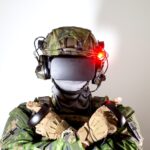As business owners, we’re always looking for ways to stay ahead of the curve and leverage technology to boost productivity and efficiency. One area of technology, in particular, has seen massive strides in recent years – computer vision. This exciting technology, a subfield of artificial intelligence, allows computers to understand and interpret visual data, essentially giving them the ability to “see”.
In this post, we will explore some practical applications of computer vision that could benefit your business, provide real-life examples of its use, and discuss future implications and trends. Let’s dive in!
Automatic Inspection and Quality Control
Computer vision can play a significant role in automating the tedious process of product inspection, thus saving time and reducing human error. By training computer vision algorithms to recognize defects, businesses can ensure that only high-quality products reach their customers.
For instance, a company called Blue River Technology has leveraged computer vision in agriculture. Their See & Spray technology uses computer vision to recognize and eliminate weeds, thus reducing the need for herbicides by up to 90%. This not only saves costs but also contributes to environmental sustainability.
Healthcare and Medical Imaging
Healthcare is another sector significantly benefiting from computer vision. The technology can analyze medical images faster and more accurately than human observers, which is particularly useful in diagnostics.
Take Google’s DeepMind Health project for example. Its AI system uses computer vision to analyze eye scans and detect signs of diseases such as age-related macular degeneration and diabetic retinopathy. This early detection can prevent severe damage and help patients receive timely treatment.
Security and Surveillance
Computer vision can also enhance security and surveillance systems. It can detect suspicious activity, recognize faces or objects, and even track movements. This real-time analysis can alert security personnel immediately, enabling them to respond swiftly to potential threats.
A case in point is the use of computer vision in airports for passenger screening and baggage inspection. It not only enhances security but also speeds up the process, leading to improved customer experience.
Future Implications and Trends
As technology continues to evolve, the applications of computer vision are bound to expand. We’re already witnessing its integration with other technologies like augmented reality (AR) and virtual reality (VR) to create immersive experiences. For instance, Snapchat uses computer vision for its famous face filters, while IKEA’s AR app uses it to let customers visualize furniture in their homes.
Furthermore, according to a MarketsandMarkets report, the global computer vision market is expected to reach $17.4 billion by 2023, up from $11.0 billion in 2018. This growth is attributed to the increasing adoption of computer vision in industries like automotive, healthcare, and retail.
Key Takeaways
Computer vision is an exciting field of AI that has numerous practical applications for businesses across various sectors. From quality control and healthcare to security, this technology is transforming traditional processes, driving efficiencies, and providing valuable insights.
As business owners, it’s crucial to stay informed about such technological advancements and consider how they can be integrated into our operations. Investing in computer vision could not only give you a competitive edge but also significantly improve your services and customer satisfaction.
As we move into the future, the applications of computer vision are only set to broaden and become more sophisticated. So, keep an eye on this space and be ready to leverage this powerful technology for your business!




